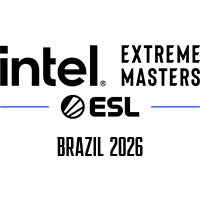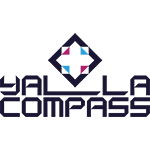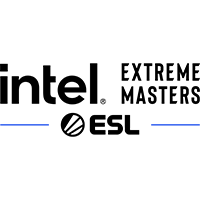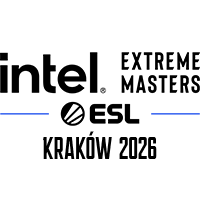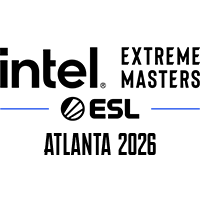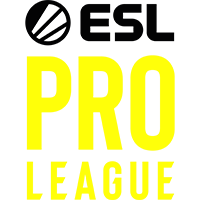The PGL Copenhagen Major Playoffs Stage commences on March 28. The top eight teams are locked in and are preparing to fight for the greatest prize in Counter-Strike. In addition to making history as the first Major champions of CS2, the victors will also take home $500,000 and guaranteed invites to the BLAST World Final and the Esports World Cup toward the end of the year.

The remaining combatants consist of eight of the top 13 teams in the world, according to HLTV’s rankings. Majors typically have a team or two pull off big upsets in the second-to-last stage, throwing the seeding balance off. This happens for multiple reasons: opening best-of-ones naturally have higher variance, high seeded teams underperforming at the Major or qualifiers, or even low seeds peaking at the perfect time.
Stacked to the Brim
Here are the top eight teams at the PGL Copenhagen Major Playoffs alongside their world rankings:
| #1 FaZe Clan |
#2 Team Spirit |
#3 Team Vitality |
#4 MOUZ |
| #5 G2 Esports |
#6 Natus Vincere |
#9 Cloud9 |
#13 Eternal Fire |
All but one team present are ranked in the top 10 teams globally. This has happened twice before at DreamHack Cluj-Napoca 2015 and IEM Katowice 2019. Yet, the PGL Copenhagen Major Playoffs are dubbed the most stacked bracket stage of any Counter-Strike Major.
In a Reddit post by u/JustAskingAQuastion, the user compiled the ranking records of every Major Playoffs since HLTV started posting their team rankings in 2015. The result is that PGL Copenhagen has the lowest (best) average team rank in its bracket stage. Additionally, the first-round draw at Copenhagen has an average rank difference of 3.8.
This number will shift up or down depending on who wins their matches. Still, Copenhagen will likely finish in first or second place in the metric. This would make the PGL Copenhagen Major the most stacked and competitive Counter-Strike Major of all time. Interestingly, the previous BLAST Paris Major had the least stacked and least competitive Major bracket ever.
How did we go from the least to the most “engaging” Major back-to-back? After the transition between CS:GO and CS2, this is no coincidence, but the number of variables is hard to make sense of. Let’s break down some theories and the facts surrounding this Major phenomenon.
[VenatusAd]
A Brave New World
While Valve tried to keep much of CS2 the same or improved over its predecessor, they made one substantial intentional horizontal shift in gameplay. CS2 would no longer be MR15; instead, it would be swapped to MR12. This term is short for “Max Rounds 15/12” and refers to each half being 15 or 12 rounds. This made for a max 30-round game + overtime in CS: GO and a max of 24 rounds + OT in CS2.
Valve looked to VALORANT and its game’s pace, as it has run on MR12 since its release. They decided they wanted CS2 more towards that game length and implemented the change without shifting their in-game economy too heavily. As a result, games are much more snowball-heavy. One wrong decision or unfortunate round now has a much broader overall game impact.
In addition, the impact of pistol rounds raises concerns. The first round of each half, or the pistol rounds, are the most random rounds in Counter-Strike. The weak weaponry and abundance of cheesy strats make it a weighted coinflip and a crapshoot at worst.
The pistol round typically sees one team win and the other either go on a full save or try and force with weaker weapons. Either way, this results in a lost second round for the loser of the pistol more often than not. Suddenly, the most randomized rounds of the game made up for 1/6 of the total max rounds played. And God forbid you lost both pistol rounds. The opponent gets 25% of the total score they need to hit match point for free? You must be MUCH better than your opponents to overcome that consistently.
Survival of the Fittest
So, we’ve established that CS2 is more unforgiving than CS:GO when it comes to mistakes and maintaining control of the game. While many saw this new look as a net negative for consistent results, there were some big benefits that came with the timing of the game’s release. CS2 launched on September 27, 2023. Over five months passed from then until the beginning of the game’s first Major. In that time, eight S-Tier events and many more lower-tier ones were held on CS2.
Esports has modernized from the old days. In an IP as big as Counter-Strike, the top orgs will have their following teams and analysts ready to go for sequel as anticipated as this. Players will be scouted, trained, and implemented faster than ever before. Old dogs must prove themselves quickly or risk being replaced.
In those five-plus months of CS2 play, teams went through a hyperbolic time chamber of adaptation. They practiced new strats, worked on updating their map pools, even re-trained their muscle memory on how to play in a new engine. Of course, the teams that could do all of this faster and better rose to the top of the pecking order.
The Game has Changed.
Even if some teams thrive more in the chaos of MR12, that’s just the game now, and it has been the game for almost half a year. Being highly ranked at this point IS indicative of overall team skill in CS2. Of course, the game is still new. Teams with fewer resources or who have struggled to transition games don’t have the same winning potential right now as those who shot out of the gate. This will likely change as more time passes.
FaZe Clan still hasn’t missed a Grand Finals in CS2. Young, talented, and adaptable teams like MOUZ and Spirit have put forth top-of-the-line gameplay and are even Major frontrunners. Long-standing squads like G2 and Vitality showed that their high floors and inconsistent ceilings are still good enough to hang at the top.
Even the lowest-ranked team in this bracket, Eternal Fire, has been way more adept at CS2 than they ever were at Global Offensive. It can’t even really be called a massive upset that they qualified when they’ve beaten the likes of MOUZ and Falcons and taken maps off FaZe and NAVI all this year.
All of these results out of the top teams are what gives them their high rankings. In the first Major of a brand-new iteration of Counter-Strike, it’s not really a surprise that the same group of teams that have trailblazed a path for five months are standing at the precipice of greatness.
So, while there are favorites among this pool of favorites playing for glory this weekend, keep in mind that every team here is here for a reason. While the PGL Copenhagen Major Playoffs are the most top-heavy playoffs in Major history, they’re also the most open. It could be anyone lifting that trophy on Sunday, penning their names into the first CS2 Major trophy ever.

